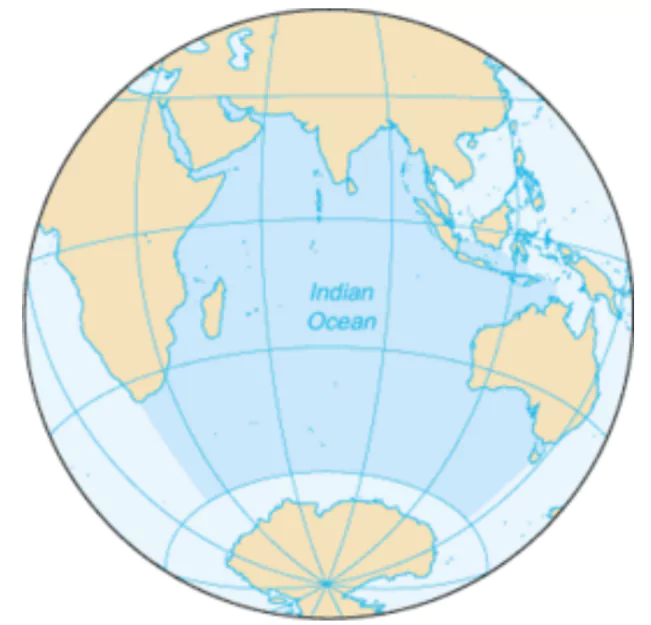Recently, the Indian Ocean has been under a lot of attention due to its rapid warming and the outsized influence on other oceans.
World Oceans Day 2024
World Oceans Day 2024 is celebrated on June 8th.
- It was suggested in 1992 by Canada’s International Centre for Ocean Development and Ocean Institute of Canada.
- Official recognition: In 2008, the UN officially recognized June 8 as World Ocean Day.
- Objective: It aims to promote ocean conservation and increase public awareness of the ocean’s importance.
- Theme 2024: “Awaken New Depths”
|
Indian Ocean Warming Accelerates
- Importance of Understanding Climate Change Response
- Exploring the Indian Ocean helps us grasp how oceans react to climate change and increasing greenhouse gases.
- Insights from studying this ocean contribute to strategies for mitigating and adapting to climate change worldwide.
Enroll now for UPSC Online Course
About Indian Ocean
Indian Ocean is the Third-largest ocean, covering 70,560,000 km², about 20% of Earth’s water surface.
- Borders: Asia (north), Africa (west), Australia (east), Southern Ocean or Antarctica (south).
- Major regional seas: Andaman Sea, Arabian Sea, Bay of Bengal, Laccadive Sea.

- Naming: Named after India, previously known as the Eastern Ocean.
- Average depth: 3,741 meters; located entirely in the Eastern Hemisphere.
- Bordered by land on three sides, resembling an embayed ocean centered on the Indian Peninsula.
- Strategic significance: Its maritime route manages world’s container traffic and helps India in its external trade.
- The region is also rich in mineral deposits and energy reserves, which make it a major area for trade.
Ecological Diversity and Tourism
- Rich in biodiversity: coral reefs, mangroves, seagrass beds.
- Significant tuna catch; home to endangered species.
- Attracts tourists with dolphins, whales, beaches, and coral reefs from Lakshadweep to the Andaman-Nicobar Islands and Reunion Island.
Unique Features of the Indian Ocean
- Northern Boundaries: The Asian landmass closes off the northern boundary, with small connections to the Persian Gulf and Red Sea.
- Southern Boundaries: The southern Indian Ocean connects to the Pacific and Southern Oceans through two oceanic tunnels.
- First Tunnel: The Indonesian seas allow the Pacific Ocean to transfer up to 20 million cubic meters of water per second into the eastern Indian Ocean.
- This water, known as the Indonesian Throughflow, carries heat and affects circulation, temperature, and salinity in the Indian Ocean.
- Second Tunnel: Connects the Indian Ocean to the Southern Ocean with two-way traffic. Colder, saltier waters flow from the Southern Ocean into the Indian Ocean below 1 km depth.
Heat Dynamics and Influence
- Water mix: Due to the closed northern boundary, the waters mix upward and with Pacific waters, then exit south.
- The mix of heat and water in the Indian Ocean significantly influences global ocean heat uptake.
- Impact of Global warming: It adds extra heat from the Pacific, while cold water from the Southern Ocean is less cold, causing the Indian Ocean to warm rapidly.
- This rapid warming leads to heatwaves and extreme rainfall over the Indian subcontinent, posing threats to corals and fisheries.
- Changes in wind circulation due to the warming Indian Ocean affect the Pacific’s ability to absorb heat, impacting global warming rates.
Check Out UPSC NCERT Textbooks From PW Store
Impact on Global Climate, North Atlantic Heat Sink
Heat Absorption Mechanism
- In the North Atlantic, surface waters become dense and sink deep into the ocean, carrying heat with them.
Impact of Global Warming
- Due to global warming, the sinking of water in the North Atlantic is slowing down, causing reduced heat escape from the surface.
- Surprisingly, the warming of the Indian Ocean is actually speeding up the sinking of heat in the North Atlantic, affecting global warming directly, ultimately helping to moderate its effects.
The Indian Ocean’s Role in Human Evolution
Geographic Changes and Evolutionary Impact
- Around three million years ago, the northward drift of Australia and New Guinea separated the Indian and Pacific Oceans.
- This separation led to a cooling of the eastern Pacific and changed the El Niño state from permanent to episodic, resulting in arid conditions in East Africa.
- This environmental change potentially forced ancestral primates to adapt by moving farther and faster, possibly contributing to the development of bipedal movement.
- World Oceans Day offers an opportunity to celebrate and study the remarkable history and influence of our neighborhood ocean.
|
![]() 11 Jun 2024
11 Jun 2024
